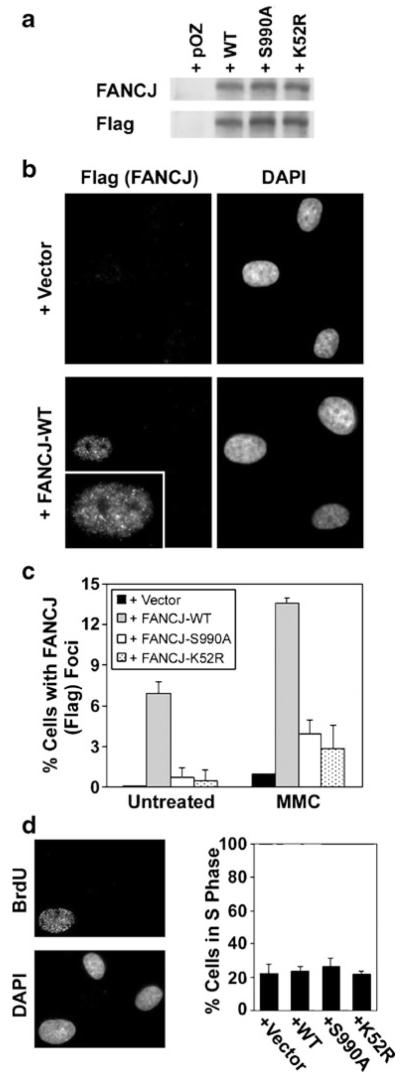Fig. 2.
The assembly of FANCJ nuclear foci involves its capacity to bind to BRCA1 and its helicase activity. a The levels of FANCJ, detected with antibodies to either FANCJ or the Flag epitope tag, in EUFA30 FA-J cells in which wild-type FANCJ, or the S990A or K52R mutants of FANCJ, were expressed. FANCJ mutants were expressed as C-terminal Flag-HA fusion proteins. FANCJ-Flag-HA was detected with antibodies to either FANCJ or the Flag epitope tag. Cells that contained the empty pOZ vector are shown for comparison. b Representative images of epitope-tagged FANCJ, detected with an antibody against the Flag peptide, for EUFA30 FA-J cells that contained the pOZ vector alone or which were corrected by expression of FANCJ-WT. Cells were exposed to 0.5 μM MMC for 20 h. An enlargement of the nucleus, which is positive for FANCJ foci, is in the inset. c Quantification of the assembly of FANCJ nuclear foci, detected with an anti-Flag antibody, in EUFA30 cells containing empty vector, wild-type FANCJ, or its mutants, both in untreated populations or following exposure to 0.5 μM MMC for 20 h. d Example of BrdU incorporation in untreated EUFA30 cells corrected with wild-type FANCJ is shown (left). Determination of the percentage of S phase cells by measuring BrdU incorporation in untreated populations of EUFA30 cells containing empty vector or each form of FANCJ described above (right). For each measurement, three counts of 150 or more cells each were made using a microscope and the average±standard deviation is shown. The levels of FANCJ foci were statistically different (p<0.01) in cells corrected with wild-type FANCJ, as compared with cells expressing no FANCJ or other forms of the protein, both in untreated populations and following exposure to MMC (c)

